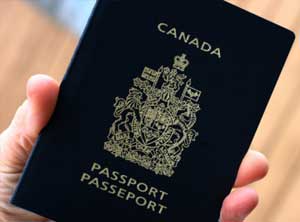
The lineup for the job fair, entitled The Working Abroad Expo, in Dublin Ireland, went right around the block. Immigration Minister Jason Kenney appeared at the job fair Saturday. (Oct. 6, 2012)
Read User Comments
Irish immigrants helped build Canada since its early days. They are now being asked to pitch in again.
A job fair over the weekend in Dublin, at which Canada and Canadian companies were well represented, drew nearly 8,000 job-hungry Irish hoping to escape hard times on the Emerald Isle.
To underscore the fact that the red carpet is out, Canada’s Immigration Minister Jason Kenney was front and centre in the Irish capital, with an appearance on Ireland’s popular Late Late Show to explain how Canada is making it easier for young people to emigrate from Ireland.
Canada is in hot competition with Australia and New Zealand — favoured destinations for Irish immigrants since the economic crash defanged the once-roaring Celtic Tiger.
“We are trying to raise the profile of Canada because we have seen huge numbers of highly educated young Irish going to Australia,” Kenney told the Star before leaving on the four-day visit. “So this is a test drive on our effort to have a more proactive recruitment-based immigration system.”
Kenney said he only has to look around the parliament buildings in Ottawa to see the contributions the Irish made to Canada. “There are shamrocks (engraved in the stone) that is a reminder that the Irish are one of the founding peoples,” he said.
Alice O’Grady, 24, is one of those who left Ireland for greener pastures in Canada. Originally from Bantry, a small town in County Cork, O’Grady has been here less than three months and is currently busy handling PR for a car rental agency.
“I love it. I would actually hate to go home,” said O’Grady, who lives in east-end Toronto with her Irish boyfriend.
To sweeten the pot, Canada will increase the length of work visas for young Irish and double the quota of those who may arrive through the International Experience Canada (IEC) program.
Beginning in 2013, Citizenship and Immigration Canada will increase the number of spaces available for Irish, aged 18 to 35, by 1,000 to 6,350 and will seek to nearly double the current IEC quota to 10,000, beginning in 2014.
The IEC allows young Irish to travel and work in Canada for up to one year; they get an open work permit, which allows them to work for any Canadian employer. In exchange, young Canadians can likewise travel and work in Ireland.
Currently, Irish youth can participate twice in the IEC for a maximum of 12 months each time. Beginning in 2013, however, they will be eligible to take part in the IEC only once but for a period of up to two years, the department said.
One employer seeking Irish workers is the Labrador-based Iron Ore Co. of Canada. The company, which also attended the Dublin job fair, needs 200 skilled trades — electricians, heavy duty mechanics and millwrights among them — over the next five years and is convinced that Ireland can supply them.
Newfoundland and Labrador have “really strong Irish roots and a very strong Irish cultural heritage, so we believe that would be a really great fit,” said Heather Bruce-Veitch, the company’s director of external relations.
Toronto’s John Harrington, a registered Canadian immigration consultant with several Irish clients, said people “are cold-calling me from Ireland” looking for work.
“Their economic recession has brought a lot of that about. I see a lot of the skilled trades, electrician, plumbers, engineers,” he said.
But he cautioned that anyone who comes over as a labourer won’t have an opportunity to immigrate to Canada “unless you marry someone here. It’s all based on the skill level of your occupation.”
An excited Jack Price, 24, is coming to Canada in two weeks.
“I managed bars in Ireland, so hopefully I will get into the bar business,” said Price, also from Bantry.
Price, a qualified sailing instructor, said he “fell in love” with Canada when he visited in 2010 for a Georgian Bay sailing competition.
According to the
Irish Times, attendance was down about 25 per cent compared with the same event last March, when attendees lined up for over three hours to get in and many people were turned away.

















